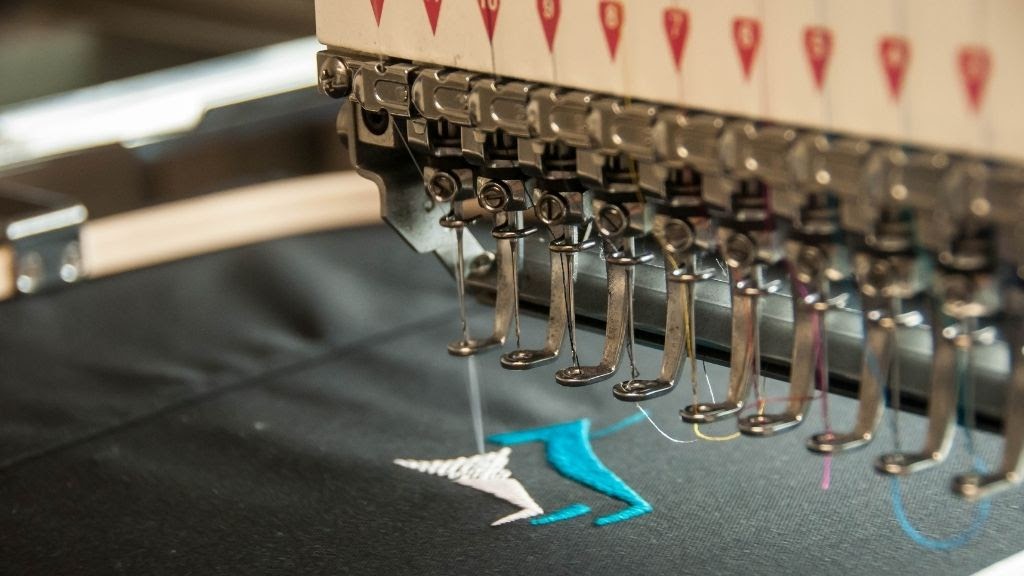
Why Embroidery Distinguishes a Company’s Promotional Products
Embroidery designs can be basic monochromatic works of art or elaborate illustrations with a lot of detail. Learning to embroider doesn’t have to be difficult, and it doesn’t have to feel like a significant time and financial investment at the outset. In this post, we will assist you in comprehending the various methods for obtaining high-quality logo embroidery for your company’s branding.
The ultimate embroidery studio checklist
Quality embroidery machine
A machine is a necessary piece of equipment for any endeavour that you do. One of the most important functions of an embroidery machine is to stitch patterns onto fabric. By owning a quality embroidery machine, you have the ability to produce, adorn, personalise, and decorate virtually any sort of fabric at any time. It is not as difficult as it may appear at first glance to learn how to use an embroidery machine. Moreover, machines are now being engineered to be as user-friendly as possible to make it much easier for you to accomplish your embroidery projects.

Durable embroidery thread
The texture of embroidery thread and sewing thread is the most significant distinction between the two. Embroidery thread is a type of yarn specifically designed for use in embroidery and other forms of needlework, and it is either produced or hand-spun. Aside from that, it is a specialised sort of thread that is used for embroidery work and has a distinct shine, whereas ordinary sewing threads do not have any sheen at all.
If you want to find the best embroidery thread, you should first check if it is colourfast. If your threads will be exposed to moist environments, you should take extra precautions to ensure that each and every colour of thread is colourfast. This word refers to the fact that the dye will not run when exposed to water. The more turbid the water is, the more likely it is that colour will run.
Another way you can ensure quality embroidery thread is its washability. You can mostly determine this quality in the instructions of the floss. Even though embroidery thread is washable under the right conditions, you may want to wash the things that have been embellished with it in a separate wash.
Enduring embroidery stabiliser
The embroidery stabiliser is used to stabilise the cloth as it is being stitched, preventing puckering and straining from occurring throughout the process. The type of stabiliser used in an embroidered project can make or break the project’s outcome. The greater the weight of the backing, the more stability it will often provide. Suitable backing suppliers will carry a wide variety of weights, types, and sizes of stabiliser in both pre-cut sheets and rolls, as well as in both pre-cut sheets and rolls. In embroidery, the backing is a sheet of material hooped and stitched in the same manner as the fabric that is being embroidered.
Adequate number of stitches and proper stitching type
Unfortunately, the majority of tailors are not familiar with the many embroidery stitches that are used in the development of these patterns. You should be aware that the movement of the embroidery needle determines the stitch or design created by the needle during the embroidery process. Being familiar with the various embroidery stitches helps you understand what you are doing when working on your project. Learning embroidery stitches also assists in the identification of niches and target markets as well as the fulfilment of their interests.

Proper needle type
You will eliminate thread breakage if you use the proper needle, and your embroidery pattern will run smoother and look cleaner, crisper, and more professional. Most often, sizes 7 and 9 are utilised in embroidering projects. They are particularly well suited to persons who have difficulties looking through the eye of a needle. The size ten curved beading needle, on the other hand, is the most common size for fine embroidery threads. These are long, thin needles with a curved head and a long eye used for sewing. The backs of embroidered stitches are secured with curved needles, which are particularly useful if the fabric is extremely taut and the backs of the stitches are small and tightly packed.
Digitalisation of company logo design
Given the fact that embroidery machines are unable to read the same types of files that your computer can, you must first digitise your logo in a format that the machines will understand before they can perform their functions. First and foremost, you must upload your logo to a digitalising software program. Next, be sure to choose a size that will be appropriate for your promotional goods. Another important stage in this process is determining the stitch type. Backstitch, satin stitch, and running stitch are just a few of the embroidery stitch styles to choose from. Afterwards, you should decide on the direction in which your stitch will run. Various stitch patterns can be employed to create the appearance of varied curves, textures, and hues by alternating between them. Following that, choose the colours of your embroidery thread based on the colours of your company’s logo. Finally, transfer the file to your embroidery machine using the appropriate software. This can be accomplished by using a USB cable, a flashcard, or directly from the computer running the embroidery program.
Finding the right embroidery company
If you want to invest in embroidery products, you must find the right embroidery company.
Blandon WA offers a customised embroidering service for local businesses that demand high-quality corporate workwear and uniforms for their staff. As well as promotional clothing, we can embroider items that will be given away to clients, ensuring that your company’s name and emblem will not fade away after a few washes.
